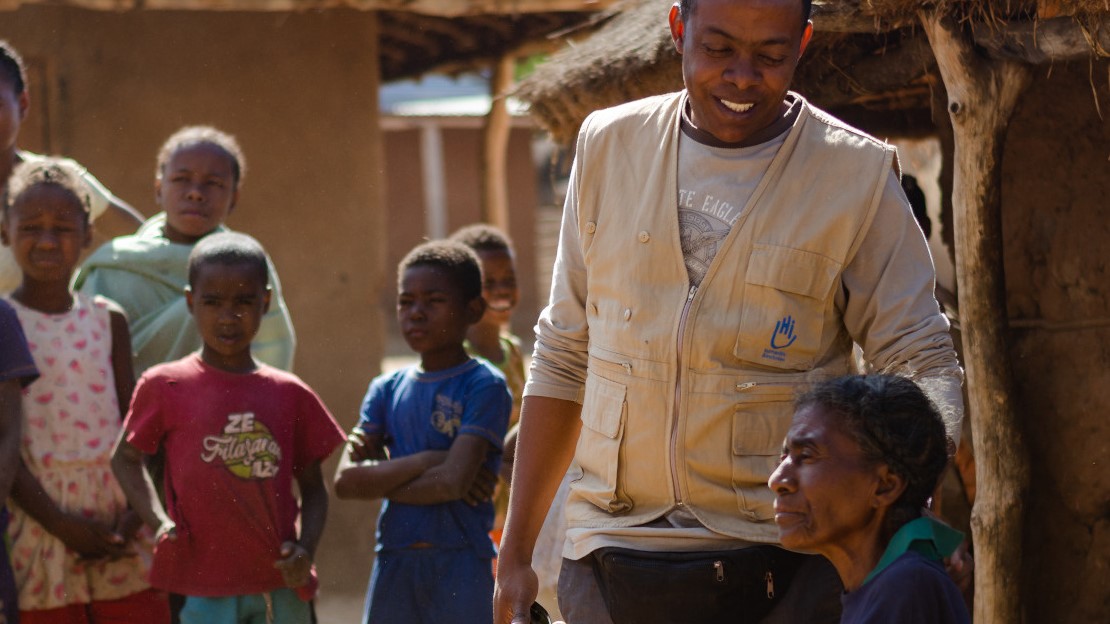The Climate March will take place on December 3rd, coinciding with the International Day of Persons with Disabilities, an opportunity for people with disabilities to demonstrate how climate change is affecting their daily lives.
Disabled people are four times more likely to die in a disaster
Climate change is increasing the frequency and intensity of extreme weather and climatic events. Whether sudden and intense disasters such as cyclones and floods, or slower changes such as rising temperatures and droughts, climate change has a disproportionate impact on the daily lives of people with disabilities. People with disabilities are up to four times more likely to die in disasters. There is an urgent need to reduce the exposure of people with disabilities to disasters.
During cyclones and floods, people with disabilities are too often left behind, especially in areas where stigma against them runs rampant. According to the United Nations Office for Disaster Risk Reduction (UNDRR), only one in four people with disabilities is able to easily follow evacuation instructions during a disaster, and only 11% are aware that their community has a disaster management plan.
They lack sufficient information about the risks associated with disasters and what they should do to protect themselves.
“Whether it’s general information to educate people about risks or emergency alerts, the challenge is to provide the information in an accessible way so that as many people as possible can benefit. This can be achieved by varying communication channels and methods, and taking into account different circumstances, such as people with reduced mobility, hearing or visual impairments or mental disabilities,” explains Jennifer Mbuama, Disaster Risk Reduction Specialist at HI.
Many people do not evacuate their homes because they do not get the warning message in time or do not understand the entire evacuation procedure, so the evacuation shelters may be left in place while residents are forced to evacuate.
More danger during forced relocation
If people with disabilities are successful in fleeing, they also face particular protection risks. In emergency shelters, or in forced displacement situations more generally, they are more vulnerable to violence, exploitation and abuse. Young women with disabilities, for example, are at particular risk of gender-based violence.
In situations of forced displacement, people with disabilities also face many obstacles to accessing humanitarian assistance, a point once again made clear by data from the United Nations Office for Disaster Risk Reduction: 75% of people with disabilities feel excluded from humanitarian assistance.
They are often invisible and face strong stigma, making it difficult for them to meet their basic needs, especially in terms of healthcare and livelihoods.
Some people are losing their glasses or wheelchairs, making it even more difficult for them to find shelter, while others are unable to get essential medicines, putting their lives at even greater risk. Finally, HI has also observed an increase in difficulty accessing all basic needs, including water and food.
Their happiness, health and livelihoods are at risk
Other impacts of the climate crisis, such as heat waves, are also exacerbating existing health disparities. In a report published in 2022, the World Health Organization warned of the significant barriers people with disabilities face when accessing healthcare. Scientific experts say that people with disabilities around the world are three times more likely to be denied access to healthcare than people without disabilities. As a result, the average life expectancy of people with disabilities is 10 to 20 years shorter than people without disabilities.
“Climate inequities mirror health inequalities, meaning marginalised groups on the basis of age, gender and disability are doubly discriminated against and suffer disproportionately from the impacts of the climate on their health and wellbeing,” says Davide Givelli, environmental health specialist at HI.
Climate change also impacts livelihoods. Economic losses caused by climate disasters are similar across communities, but people with disabilities, who are generally more economically vulnerable, find it harder to protect their livelihoods and recover from losses.
“People with disabilities tend to be socially excluded and discriminated against, leading to socio-economic inequalities. This often translates into higher poverty rates, lower education levels and less access to general services. When climate change shocks occur, people with disabilities will find it harder to bounce back,” continues Jennifer Mbuama.
Anticipate impacts and prepare communities for risk
HI believes it is essential to take action to protect people with disabilities from climate change by equipping communities with the tools to predict and prepare for risks. To this end, the organization has launched around 20 disaster risk reduction projects in countries such as Madagascar, the Philippines, Mali and Nepal that are highly affected by climate hazards.
Another challenge is ensuring that the voices of people with disabilities are heard in efforts to tackle climate change.
“It is essential that HI works with organisations representing at-risk groups, particularly disability groups, to ensure they can make a significant contribution to public debates and decision-making processes on climate change at all levels,” concludes Jennifer Mbuama.

